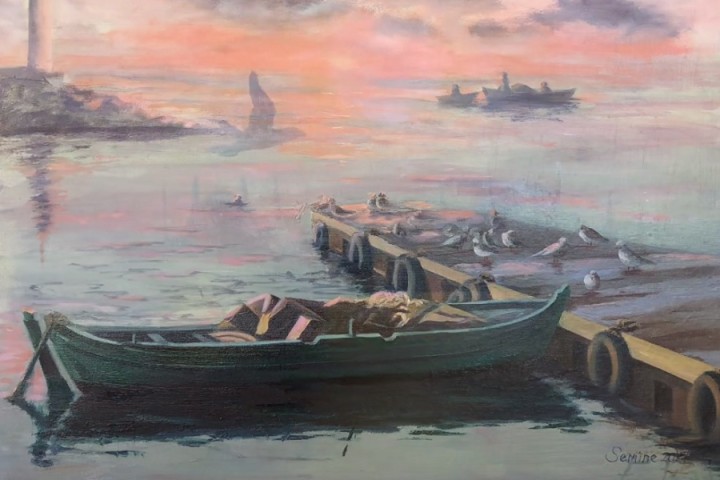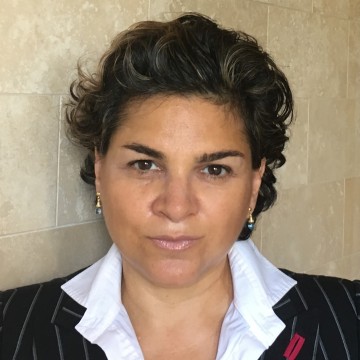Drawing Attention to the Impact of Plastic Waste on Marine Life With Art

It is Plastic Free July. Drawing attention to the impact of Plastic Waste on Marine Life with art are several environmental artists Semine Hazar Fatma Kadir, Selva Ozelli, Ilhan Sayin, and photographers Zinnia Gutowski, Ian Hutton, Alfons Rodriguez, with physical and digital art shows around the world. These artists will also take part in the Pink & Blue art show at Howland Cultural Center in Beacon, NY during Aug 10 to Sep 29, 2024.
Plastic Free July Art Show
The Plastic Free July campaign originated in Australia in 2011 to draw attention to the global problem of plastic waste which is causing serious problems for animals, nature, and people’s health. The award winning campaign is a key initiative of the Plastic Free Foundation that works towards a vision of seeing a world free of plastic waste as detailed in the 2023 Impact Report (link will open in a new window).
The Plastic Free July campaign was instrumental in the adoption of the world’s first Plastic Treaty with the support of 175 nations at the United Nations Environment Programme (UNEP) meeting in Nairobi in 2022. UNEP’s Intergovernmental Negotiating Committee on Plastics Pollution is still negotiating the Treaty’s terms so it could be implemented as soon as 2025.
Ian Hutton draws attention to the impact of plastic pollution on marine animals that live in Lord Howe Islands with a study as well as photographs on exhibit at the UN Ocean Decade Tides of Change Waves of Hope Art Show at Art on the Ave NYC at Fulton Center New York City followed by the Pink & Blue Art Show at Howland Cultural Center in Beacon, NY.
Lord Howe Island Group (LHIG), an Australian island group in the Tasman Sea east of Port Macquarie. These group of islands are one of the most beautiful islands in the Pacific that are UNESCO Heritage Sites. Showcasing the island’s natural and human history is the Lord Howe Island Museum that was founded in 1978 as a community center for promoting the island’s World Heritage values and to record, conserve, and present the unique cultural values of the community, stretching back one and a half centuries documented in books, photographs, and cultural objects in its collections.
How plastic litter is killing wildlife on Lord Howe Island by Ian Hutton and Jennifer L. Lavers:
The Lord Howe Island Museum’s collection is curated by photographer Ian Hutton who has also conducted studies on the impact of plastic pollution on shearwater birds. His study co-authored by Alexander L. Bond and Jennifer L. Lavers points out that plastic production and pollution of the environment is rising rapidly and outpacing current mitigation measures. The temporal changes in the amount and composition of plastic in boluses from Flesh-footed Shearwaters during 2002–2020 showed a generally decreasing pattern from 2002 to 2015 and increasing again to 2020 which suggests shearwater boluses to be a low-effort, high-statistical power monitoring tool for quantifying progress against environmental policies in Australia.
Ian’s studies and photography was instrumental in Flesh-footed Shearwater Puffinus carneipes being considered at risk in Australia due to threats it faces from plastic ingestion, at-sea fisheries mortality, on-land predators and a decreasing national population (click here).



Undoubtedly, microplastic pollution has affected every region of the marine environment and every level of the marine food chain, not just in Lord Howe Islands. The potential health risks associated with eating seafood products affect the worldwide seafood industry. Crustaceans are the fastest-growing fisheries industry. However, due to their predatory feeding behavior and benthic habitats, crabs are at higher risk of consuming plastic than other marine organisms. This is especially true for blue crabs (Callinectes sapidus) who spent most of their lives in coastal environments such as lagoons and estuaries, which are among the most burdened environments by microplastic pollution. A study evaluated the occurrence of plastic microplastic pollution within juvenile blue crabs which concluded that blue crabs affected by microplastic pollution from the earliest stages of their lives.
At Hudson River Park in New York the impact of micro plastic on blue crab life is addressed during the “Claws Up for Blue Crabs” Week which runs from July 14-20. For this occasion, I prepared a Moody Blue Crab & Darter Fish Art Shows for Havre de Grace Maritime Museum that launched during Plastic Free July.
For Plastic Free July I also prepared the Healing Hudson and Darter Fish of NY art shows for Putnam History Museum that launched on World Oceans Day.

